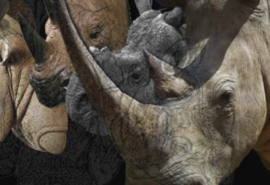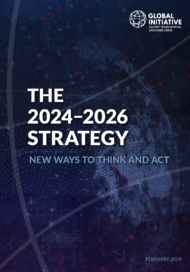Posted on 29 Oct 2018
An illicit supply chain connecting marginalized South African coastal communities with wealthy Chinese consumers has all but depleted South Africa’s stock of prized abalone.
It is among the world’s stranger black-market industries, stretching from the shores of South Africa to China’s luxury seafood market, and facilitated by drug barons, corrupt officials and neighbouring African states.
But the illicit trade in abalone has had profound environmental and social costs in South Africa, depleting stocks of the shellfish while drawing local fishing communities into the criminal underworld.
Since 2000, according to a new report by Traffic, poaching syndicates have smuggled more than 96 million individual abalone to Hong Kong, the epicentre of the trade. This equates to nearly 15 000 of the shellfish illegally harvested each day.
Worth at least US$60 million a year, the illegal trade in abalone now counts as South Africa’s third most valuable fishery, wildlife trade-monitoring organization Traffic says. It is an industry controlled by local gangs and Chinese mafia groups.
Police officials say that syndicates barter shipments of abalone for methamphetamine or its precursor chemicals, embedding the trade within South Africa’s drug economy. In the fishing communities that supply the syndicates, abalone middlemen are often closely linked to gangs and drug merchants.
‘This is not just a fisheries problem,’ said Traffic’s senior programme officer Markus Burgener. ‘Many other agencies need to get involved to address the problem holistically.’
A status symbol in Chinese cuisine, abalone is regarded as one of four ‘marine treasures’, along with shark’s fin, sea cucumber and the swim bladders of certain fish. One of the most expensive varieties of abalone occurs in South Africa, where it has been subject since the 1990s to relentless poaching. In China, it is served to celebrate special occasions or honour guests.
The illegal trade exploded in the years after apartheid, when international sanctions against South Africa were lifted. Local fishing communities had been marginalized for generations by racist laws, and many expected reform and economic opportunity to follow once the trade doors were opened to the new democratic South Africa. But change was slow in the fishing industry, bogged down by politics and corruption. Instead, droves of people turned to smuggling abalone.
At the same time, rapid economic growth in China boosted demand for status items, and the price of abalone soared. In South Africa, Chinese buyers were soon offering more than US$40 per kilogram of the shellfish, setting off a rush that has continued until today.
Trade statistics from Hong Kong, where most of the imported abalone is declared upon arrival, even if harvested illegally, indicate that current poaching levels are among the highest on record. In 2016, Traffic says, Hong Kong imported more than 3 200 tonnes of poached abalone, compared to less than 2 000 tonnes of legal product.
The bulk of the legally sourced abalone comes from South Africa’s growing abalone farming sector, which now produces nearly 2 000 tonnes of abalone a year. The commercial abalone fishery, once stable and responsibly managed, has all but collapsed due to resource depletion, with an annual quota of just 96 tonnes – about 3% of the poached volumes.
Well-stocked abalone beds once blanketed the shallow reefs lying off South Africa’s southern and western shores. Now only traces of this former abundance remain, picked clean by divers supplying the black market.
Poachers who could harvest more than 80 kilograms of abalone meat in a single dive now seldom return with more than 15 kilos. ‘This thing is nearly finished,’ said one of them, Shuhood Abader, with whom I recently co-authored a book on the illicit abalone trade.
The factors behind the illegal trade in abalone
Set against these shrinking catches, Traffic’s statistics show that the abalone poaching effort to harvest the shellfish – in other words, the time that divers need to spend in the water – is currently much higher than it has ever been. This is despite two decades of concerted anti-poaching initiatives by the authorities.
One reason for the continued poaching is corruption: money from the abalone black market has seeped into every agency tasked with curbing it, including the police, national parks service and fisheries department. In May 2018 alone, nine fisheries officials were arrested for colluding with poachers, while the department’s deputy director general has been accused of rigging auctions of confiscated abalone.
Another reason is that the structural circumstances that have led to South Africa’s illicit abalone trade are still firmly ingrained, with mass unemployment in the traditional fishing communities and some of the world’s highest income inequality. In these communities, few people besides poachers and drug merchants have the means to earn good money. This gives rise to a curious symmetry: both in China and in South Africa, the abalone trade is driven by aspiration and status.
Thirdly, there are no international agreements for regulating the trade in abalone. To avoid detection at South African ports, syndicates ship large quantities of abalone through neighbouring African countries, accounting for nearly 45% of the exported total since 2000. Traffic has called for South African abalone to be listed by the Convention on International Trade in Endangered Species of Wild Fauna and Flora (CITES) to better control these trade routes.
In the meantime, poaching grinds on, supplying a luxury food for distant Chinese tables, where consumers can pay hundreds of dollars per kilogram for South African abalone. This money trickles back, along a convoluted chain of intermediaries, to divers willing to risk their lives hunting the shellfish. A species that was once in abundant supply has become ensnared in human displays of wealth.



